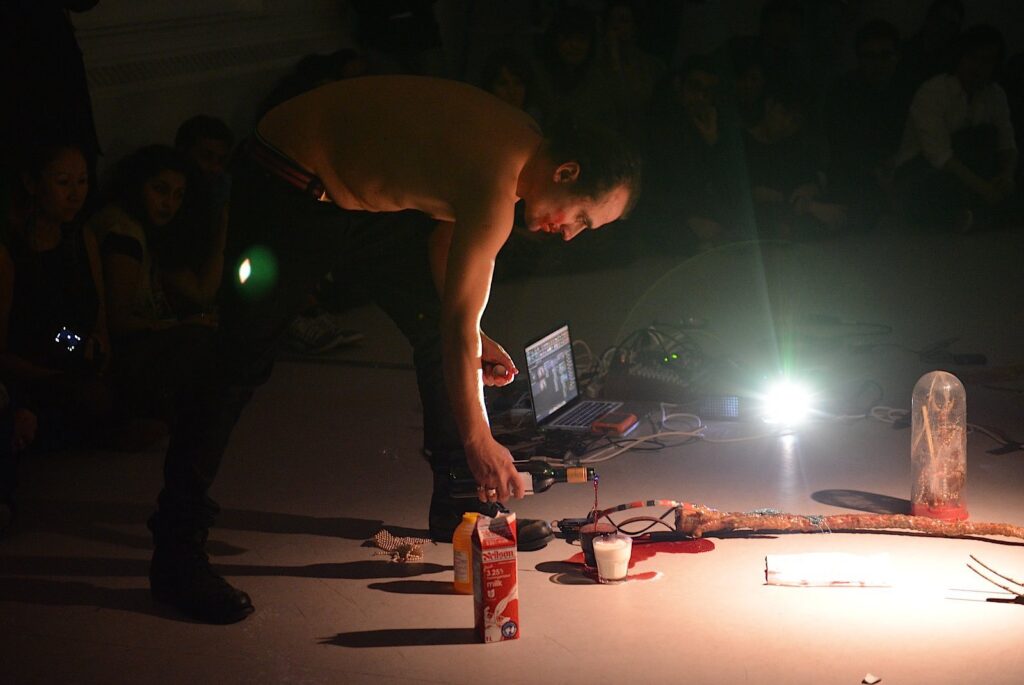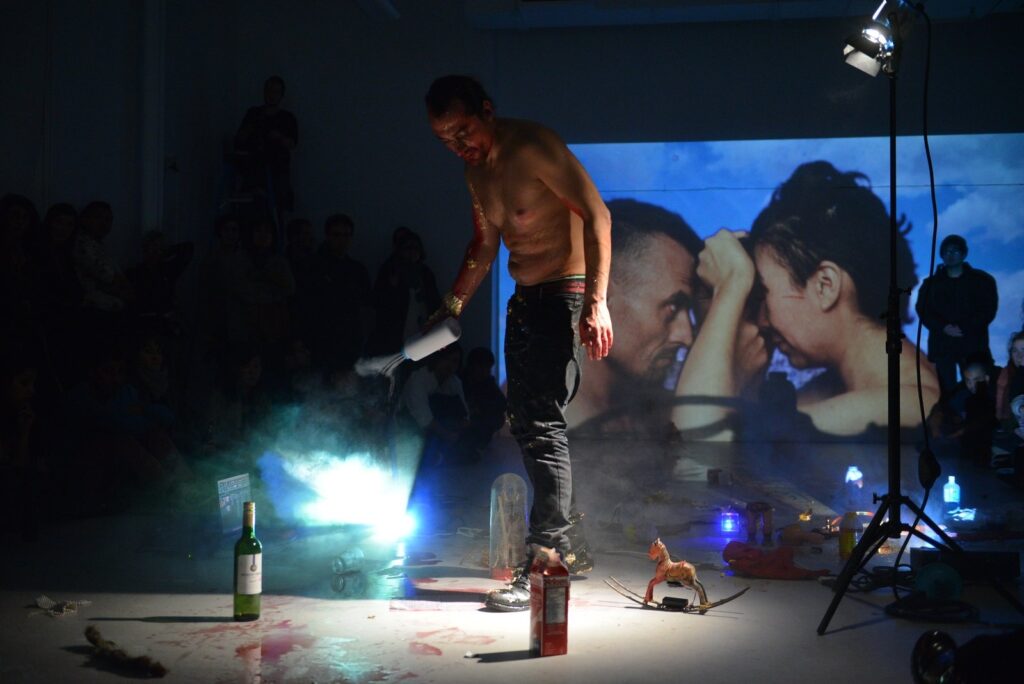By Alison Cooley

The floor is littered with objects in Theo Pelmus’s performance. Part installation, part stage set, the scene includes two projections on opposing walls of a small kitsch Pieta sculpture (bits of gold leaf and a stuck-on butterfly clinging to it in the wind), small bottles of baby powder, wine, and honey, a toy rocking horse, doll parts, and what appears to be a strap-on dildo, cartoonishly extended, its bulbous surface dribbled in glitter. His performance, Immaculata Conception Second Vision of Excess begins with the artist anxiously pacing in circles around the room. A baroque disorder begins to descend upon the scene: Pelmus drips honey, puffs baby powder dust in the air, he smears lipstick on the floor with his teeth, overfills two glasses with wine and milk until they bleed into each other in a grey-pink on the floor. He does a headdstand, and coming down, topples the glasses. It’s circus-like. A toddler in the crowd watching exclaimes “uh oh! What happened?” and I can’t help but agree. Pelmus’s ostentatious scene is dizzying.

Pelmus straps the exaggerated dildo to his face. There seems to be a remote control in it, and over the course of the the performance, the projections flit between images of white foxes, a chocolate-drizzled pelmus, a broken pinocchio doll attempting to speak, blue flames, a superimposed copy of the Bible, the moon, a beaded penis cozy, a baby in a field. Pelmus drives the dildo-nose around the room, slowly. He whips the projections with it, lights a plaster cast of teeth on fire and attempts to put them out with gold leaf. His face appears again and again in the projection, disjointed since in the dark, amid the steady unfurling of this malformed world, we don’t ever get to see it, lock eyes with it.

There is so much to get lost in. What is most compelling in Pelmus’s over-sensory scenes are the excesses and violences of Christianity. His gawdy rock-operatic ballet of the grotesque returns again and again to the wine, the gold leaf, the child, the virgin Mary, the deviance of sex, the extravagance, the repentance. The shattering moment of stillness in Pelmus’s monstrous parade comes with a projected video of he and his partner. She speaks what I discern as Anisshinaabemowin, and together she and Pelmus join the front strands of their hair together in one thick braid. There is a hint, in this moment, of this abject opera as more than just a spectacle, but a meeting place of two people who bear an elaborate and nuanced relationship to these questions of religion and social convention. In this moment, Pelmus lifts the veil of the persistent and complex relation between humans and the church (in the distinct but nonetheless layered and intersecting contexts of Catholocism in colonized Canada and Orthodoxy in Romania). The simple act of two people standing face to face and communing with each other (not with God, or with their own tormented psyches) never repeats in Pelmus’s performance. It stands out as a moment of clarity and presence, an opening of the internal world to each other.
